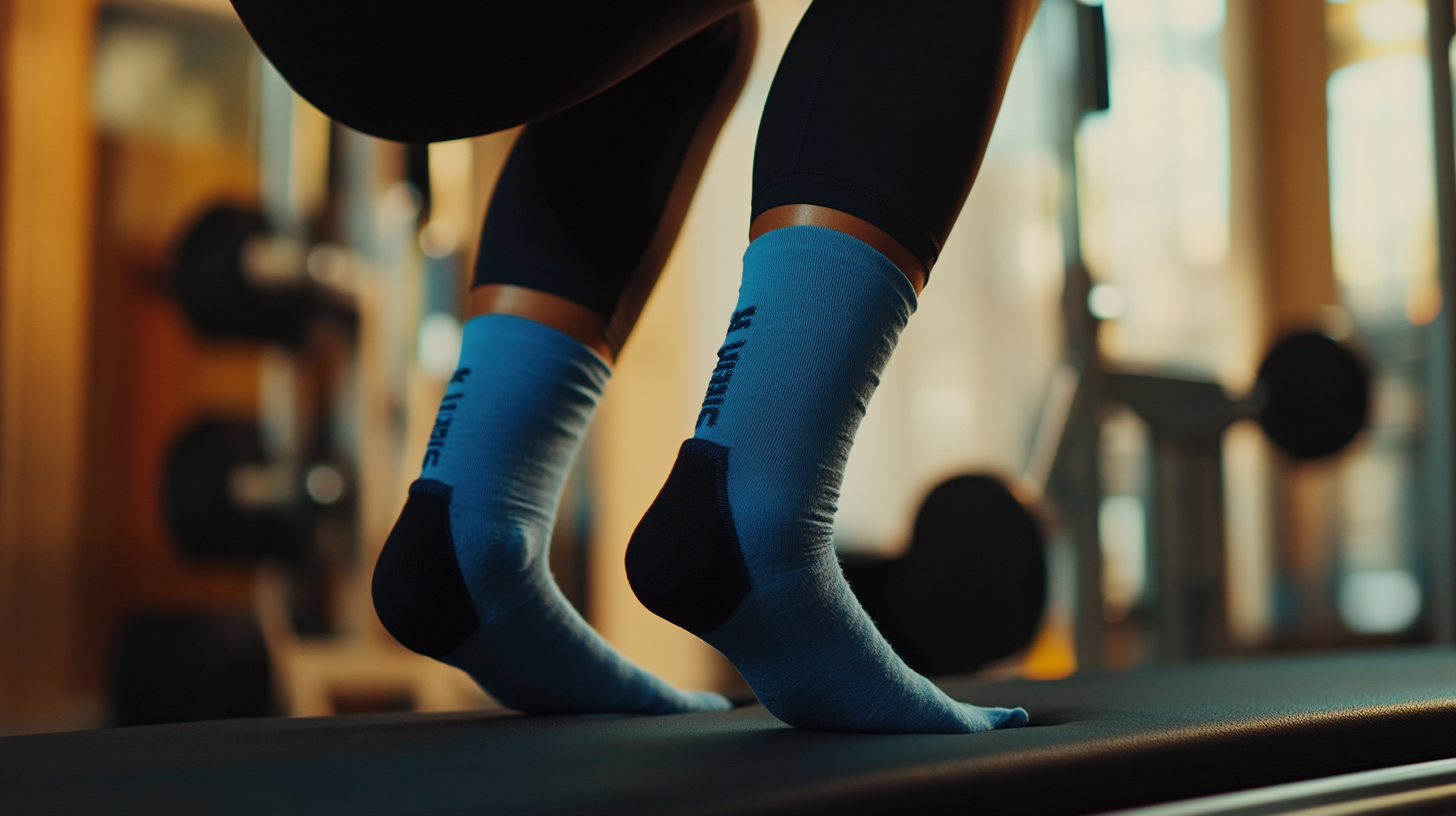
Leave Your Message
-
lwl2103
-

In the world of fitness and wellness, Reformer Pilates has gained tremendous popularity for its emphasis on strength, flexibility, and a balanced body. As practitioners seek to enhance their workout experiences, the right equipment and gear become crucial elements in achieving optimal results. One essential accessory that has seen significant innovation is the Reformer Pilates Socks. These specially designed socks not only offer grip and stability on the reformer but also provide comfort and style to the wearer. In this blog, we will delve into the technical specifications of the best Reformer Pilates Socks available in the global market, exploring their unique features, materials, and industry applications. By understanding what sets these socks apart, buyers can make informed choices that align with their specific needs and enhance their Pilates practice.

When it comes to Reformer Pilates, the quality of your gear significantly affects your performance and comfort during workouts. High-quality reformer Pilates socks are essential, providing grip and stability while preventing slippage on the reformer machine. Research indicates that socks designed with specialized non-slip materials can enhance safety, making it easier for practitioners to focus on their form and flow. As more individuals turn to home-based workouts, understanding the importance of these socks has never been more crucial.
To ensure you're choosing the right pair, consider socks that incorporate breathable fabrics and a snug fit. These elements not only improve comfort but also aid in moisture management, which can be particularly beneficial during rigorous sessions. According to industry reports, around 71% of Pilates enthusiasts express that the right attire significantly boosts their workout experience.
**Tips:** When selecting Pilates socks, look for those that feature arch support and reinforced toe areas for added durability. Also, consider investing in a pair with a seamless design to minimize irritation during movements. Lastly, remember that colors and patterns can also enhance your motivation—choose designs that resonate with your style!
When selecting the ideal reformer Pilates socks, it's crucial to focus on key technical features that enhance performance and comfort. A study published in the Journal of Sports Science indicates that proper grip and stability are crucial for effective movement during Pilates sessions. Look for socks made with high-grip soles, often constructed from silicone or rubberized materials, which provide superior traction on reformers. This feature is essential for preventing slips, especially during dynamic movements that require a stable foundation.
Another important aspect to consider is the material composition of the socks. A report from the National Institute of Health highlights that moisture-wicking fabrics such as bamboo, merino wool, or specialized synthetic blends not only keep feet dry but also help regulate temperature during workouts. This quality can significantly reduce the risk of blisters and enhances overall comfort. Considering environmental impacts, eco-friendly materials are gaining popularity, appealing to an increasingly conscientious consumer base. As more buyers seek sustainable options, brands that offer eco-friendly solutions stand out in the market.
When it comes to selecting high-quality reformer Pilates socks, the choice of materials plays a crucial role in ensuring comfort and durability. According to a recent report by Textile World, the incorporation of moisture-wicking fabrics, such as polyester or nylon blends, helps in keeping feet dry and reduces the chances of slipping during workouts. This is particularly important for Pilates enthusiasts who require stability and grip while executing movements on the reformer.
Another significant factor is the elasticity and breathability of the materials used. A study by the American Journal of Sports Science highlights that socks featuring a blend of cotton and spandex not only provide a soft touch but also allow for a full range of motion. These materials help in minimizing friction, which can lead to blisters, ultimately enhancing the overall workout experience. For global buyers, knowing that socks equipped with targeted cushioning and arch support can prevent fatigue during lengthy sessions is essential.
Additionally, the durability of Pilates socks is not solely dependent on the fabric but also on the manufacturing techniques employed. Reports indicate that seamless construction methods significantly improve longevity and comfort, as they eliminate irritation points that typically arise from traditional stitching. As the demand for specialized athletic gear continues to grow, understanding these material characteristics will empower buyers to make informed purchases that align with their fitness journeys.

 When searching for a reliable manufacturer for Pilates socks, it's crucial to focus on several key factors that can significantly impact the quality and performance of the product. First and foremost, assess the manufacturer’s experience in textile production, particularly in the niche of athletic apparel. A company that has specialized in activewear will likely have a deeper understanding of materials that offer both comfort and functionality, such as moisture-wicking fabrics and grip soles that enhance safety during workouts.
When searching for a reliable manufacturer for Pilates socks, it's crucial to focus on several key factors that can significantly impact the quality and performance of the product. First and foremost, assess the manufacturer’s experience in textile production, particularly in the niche of athletic apparel. A company that has specialized in activewear will likely have a deeper understanding of materials that offer both comfort and functionality, such as moisture-wicking fabrics and grip soles that enhance safety during workouts.
Another vital aspect to consider is the manufacturer’s commitment to quality control. Inquire about their production processes and whether they adhere to industry standards. Reliable manufacturers often provide transparency regarding their sourcing and testing of materials, ensuring their products meet the expectations of global buyers. Additionally, customer reviews and testimonials can offer invaluable insights into the manufacturer's reputation and the satisfaction of other users. By taking the time to research these elements, buyers can make informed decisions and establish fruitful partnerships with dependable manufacturers in the Pilates sock market.
When navigating the global market for reformer Pilates socks, it's imperative for buyers to understand varying standards and regulations that govern product safety and quality. According to a report by Statista, the global activewear market is projected to reach $547 billion by 2024, highlighting the importance of adherence to international safety protocols to ensure consumer trust and satisfaction. In different regions, requirements can vary significantly; for instance, the European Union mandates compliance with the REACH regulation, ensuring that products do not contain harmful substances that could pose risks to consumers.
Furthermore, the ASTM International provides guidelines for textile performance, which includes slip resistance—an essential factor for reformer Pilates socks. In North America, compliance with ASTM F2913 is critical, as it outlines the testing methods for assessing the slip resistance of footwear. Global buyers should be vigilant about sourcing products that meet these standards, as not only does this enhance user safety, but it also promotes brand credibility in a competitive market. With the growing trend towards eco-conscious activewear, understanding sustainable materials is equally important; as reported by the Global Fashion Agenda, 83% of consumers believe that brands should prioritize sustainability in their product offerings. Thus, wise navigation of market standards will ultimately benefit both buyers and manufacturers in the reformer Pilates industry.
